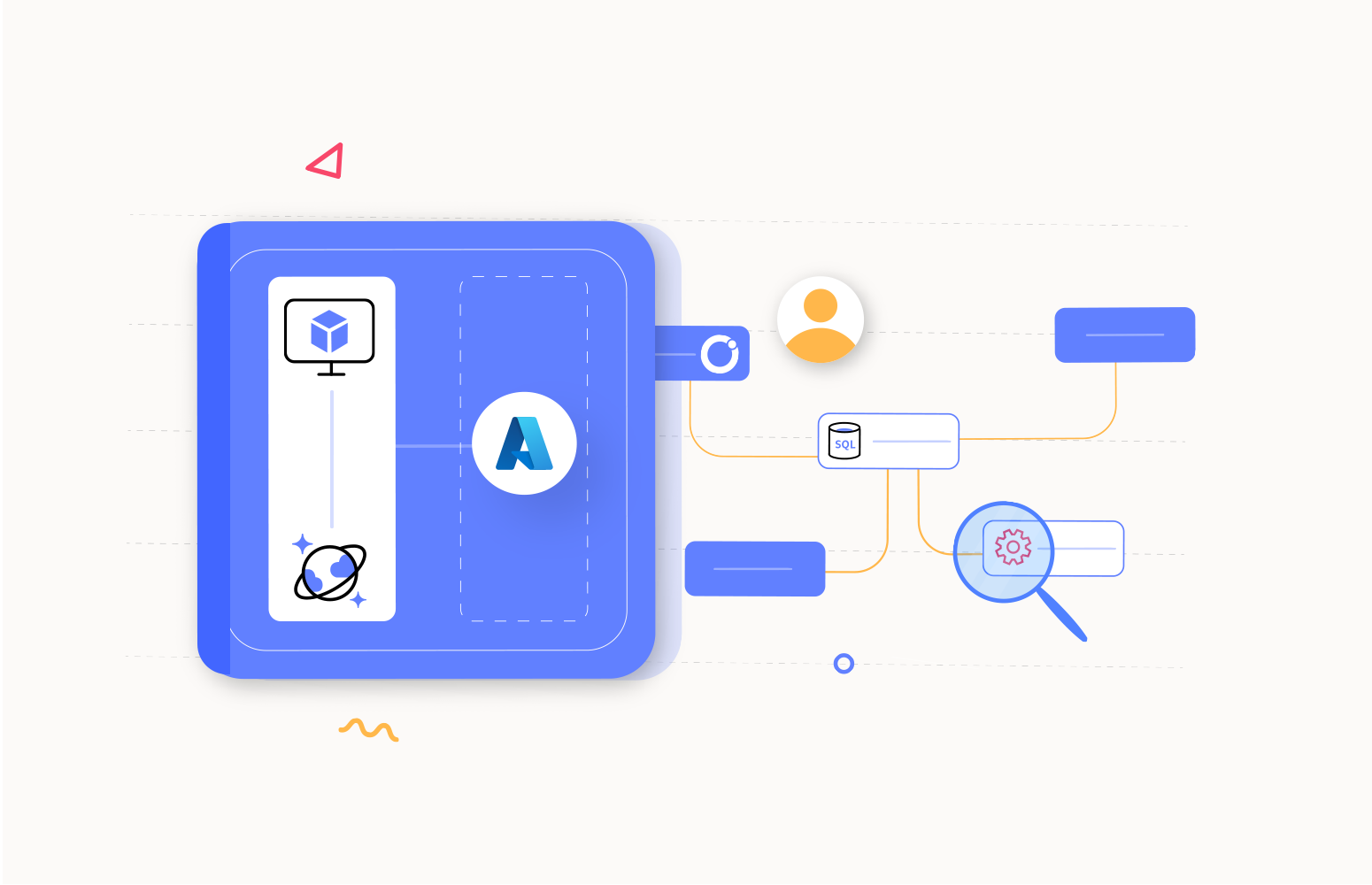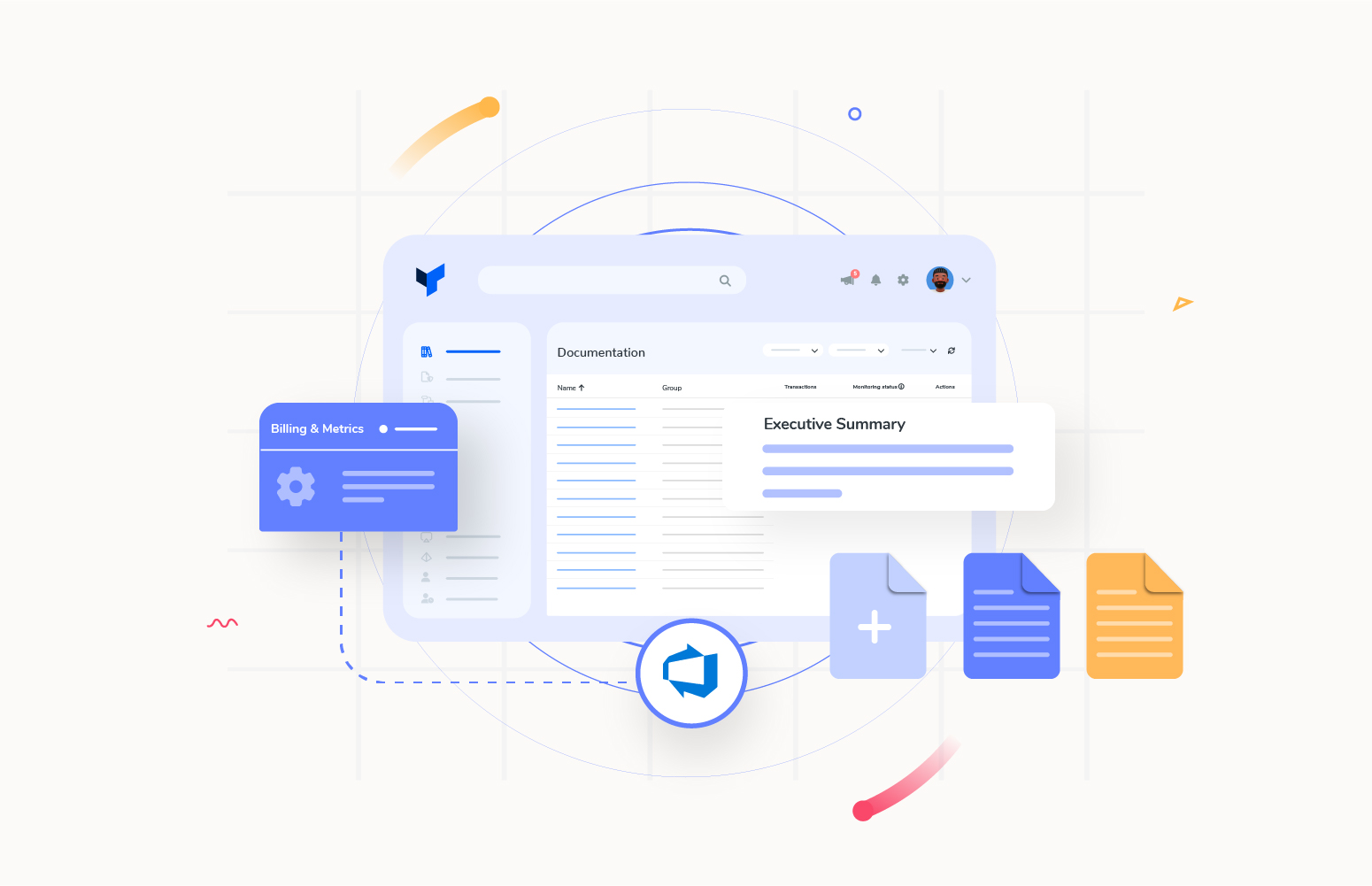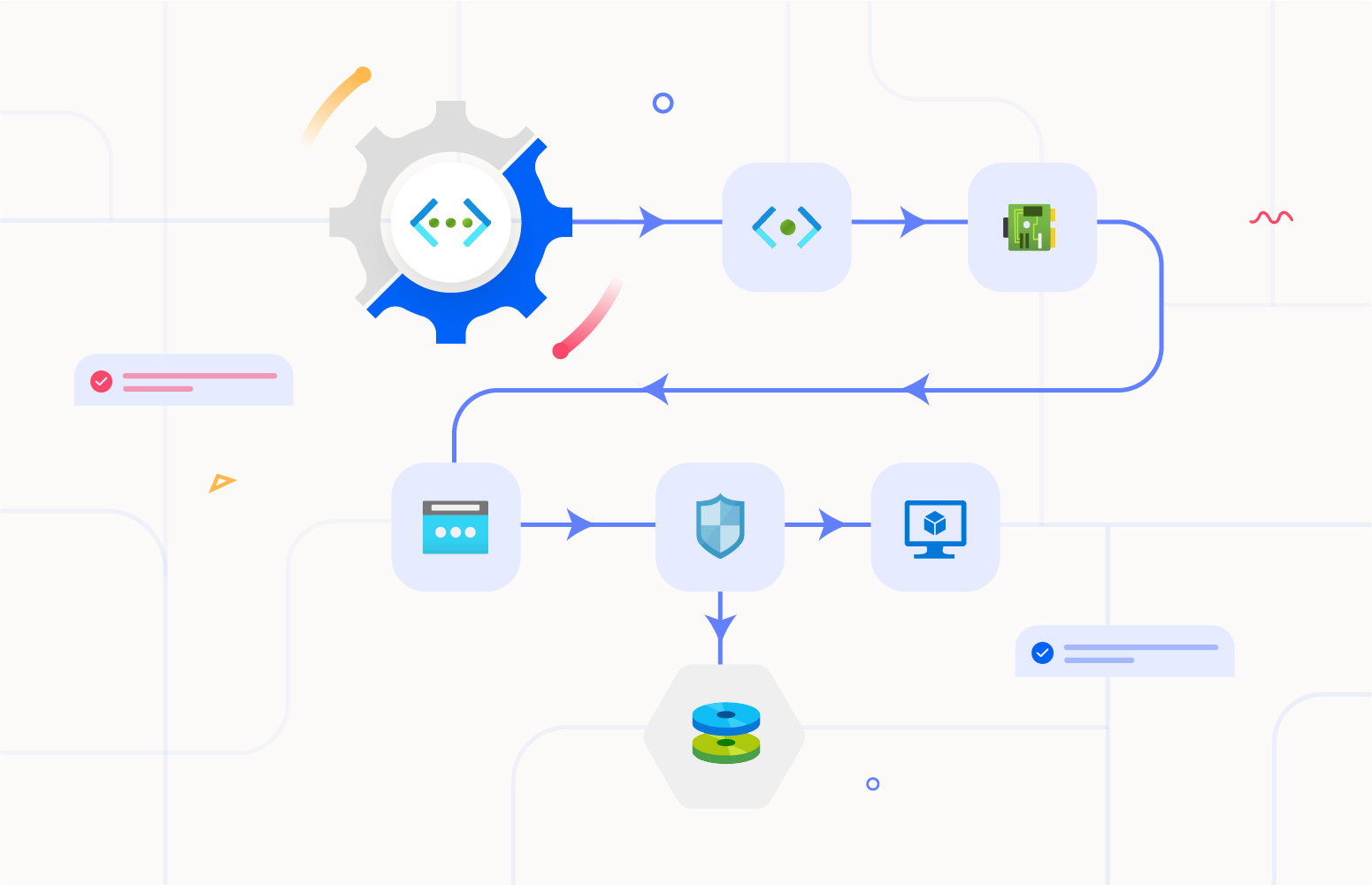As cloud adoption expands, subscribing and provisioning resources increase day by day. Regular analysis and assessment are essential to monitor usage, ensuring that cloud resource spending remains efficient and minimizing waste. The assessments can be made using many ways but will need some level of technical competence and regular maintenance:
- Use Azure portal capabilities to configure asset management and monitoring.
- Build custom tools using APIs exposed by Microsoft Azure support.
- Use 3rd party tools and services.
Not all stakeholders will have access and the necessity to check through these tools. Still, it will be easy for the decision-makers to investigate the reports, summaries, comparison assessments, and useful charts or diagrammatic representations. This will help them to assess the usage briefly and make strategic decisions.
Why Azure Environment Documentation is Essential?
Documentation captures essential information about your Azure environment, including configurations, resource details, and architecture of each subscription. It helps preserve institutional knowledge, ensuring that critical information is preserved under all circumstances. Well-documented environments can also help to expedite troubleshooting and debugging.
Documentation provides a baseline for change management. Before updating or modifying our Azure environment, we can refer to existing documentation to assess potential impacts and ensure that changes align with best practices. For organizations with compliance and security requirements, documenting the Azure environment helps in auditing and ensuring that necessary security controls and configurations are in place. It can be crucial for regulatory compliance.
As the organization grows, having documented procedures for scaling resources up or down can save time and reduce the risk of errors. Documentation promotes consistency in resource deployments and configurations, reducing the chances of inconsistencies or misconfigurations that can lead to issues down the line.
Challenges Faced in Documenting an Azure Environment
It is very difficult to keep the document up to date with the changes that happen so frequently in the environment/infrastructure. Eventually, the documentation becomes stale. Getting the complete picture of how well Microsoft Azure is being used can be complicated as the Azure environments can be highly complex, with numerous interconnected services, dependencies, and configurations.
Documenting this complexity comprehensively can be time-consuming and error-prone. Creating documentation for an Azure environment demands time and resources, which may be scarce in busy project settings. Ensuring proper version control for documentation, mainly when multiple team members are contributing, can pose difficulties in guaranteeing that everyone is working with the most recent documentation. Inconsistent documentation practices across teams or individuals can lead to confusion and difficulties in finding and using documentation effectively.
How to document the Azure environment?
It is very helpful to document the whole environment in a way that can be easily exported to a standard format, like having the ability to look at exactly what is going on in your Azure environment.
There are certain aspects to the documentation:
- What is to be documented?
- How do we document?
- Relating the documentation to the deployment and usage
- Keeping the documentation up to date
- Making it transparent and accessible to the relevant stakeholders
Utilizing various documentation tools in the market can help us to streamline this process. To document your Azure architecture using these tools, initiate by configuring them to connect to your Azure environment.
Azure Documenter in Turbo360 stands out as the premier choice due to its user-friendly interface, robust features, and seamless integration with Azure services. It possesses the ability to consolidate data from various resource providers within Microsoft Azure into a unified report.
This allows for the creation of comprehensive technical documentation across resources, enabling richer insights that would otherwise be impossible. Azure Documenter is used to interpret the cost and resource information on Microsoft Azure subscription into legible documentation.
Azure environment documentation using Turbo360
With Turbo360 Azure Documentation Tool, we can comprehensively capture and visualize the architecture, presenting a clear picture of resources, configurations, and dependencies. While other tools offer valuable documentation capabilities, Azure Documenter’s excellence shines through its ability to seamlessly adapt to changes, providing real-time updates to ensure accuracy.
This enhances collaboration among team members and establishes a reliable reference point for troubleshooting, auditing, and future planning, making Azure Documenter the preferred choice for comprehensive Azure architecture documentation.
It saves a lot of time by automating up-to-date documentation of your Microsoft Azure environments. It generates a report on your assets, reduces manual effort, and provides stakeholders at all levels, confidence, and clarity in adopting Microsoft Azure cloud.
Azure Documenter aggregates the inventory of all your Resource groups. It eliminates manual activity in searching and collecting data about different resources and deployments. Azure Documenter allows the generation of different document types, each covering a different use case.
This offers a unified document displaying all your subscriptions in one place. This kind of information is available nowhere else. With this comprehensive view provided by the Azure Documenter, we can get a better understanding of our resources and costs, offering valuable insights for our business operations.
Executive summary
This summary provides an overview of the Azure resources within the specified Resource Groups and their distribution across Azure regions for all our chosen Azure subscriptions. It also includes a billing summary for the selected documentation period, highlighting the total cost incurred and cost breakdown by resource type and location. Additionally, it outlines the security assessment details, including overall security and identified security issues with their descriptions and severity levels.
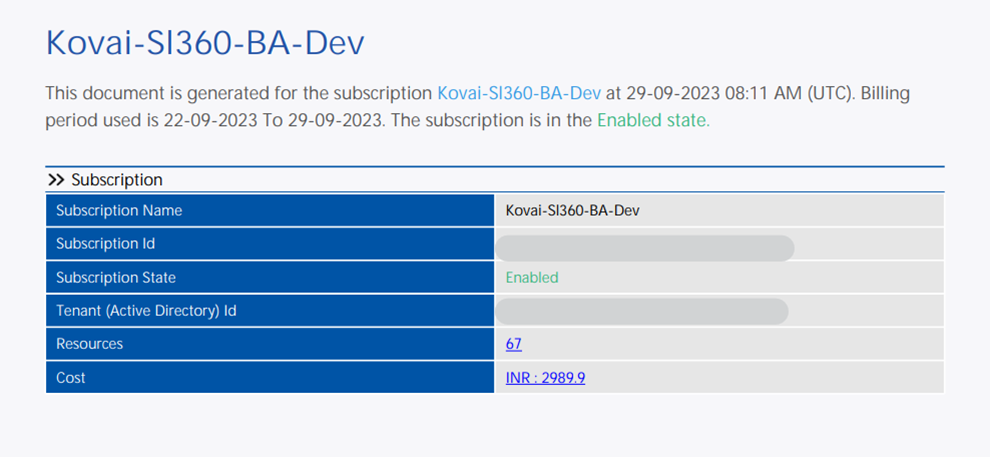
Resource details
This document type furnishes detailed insights into each individual resource while offering a consolidated overview of resources categorized by their Resource Types, Resource Groups, and locations. We can apply diverse filters based on resource types, resource groups, and individual resources. Utilizing these customized filters will generate a concise report for all subscriptions, focusing only on the essential resources.
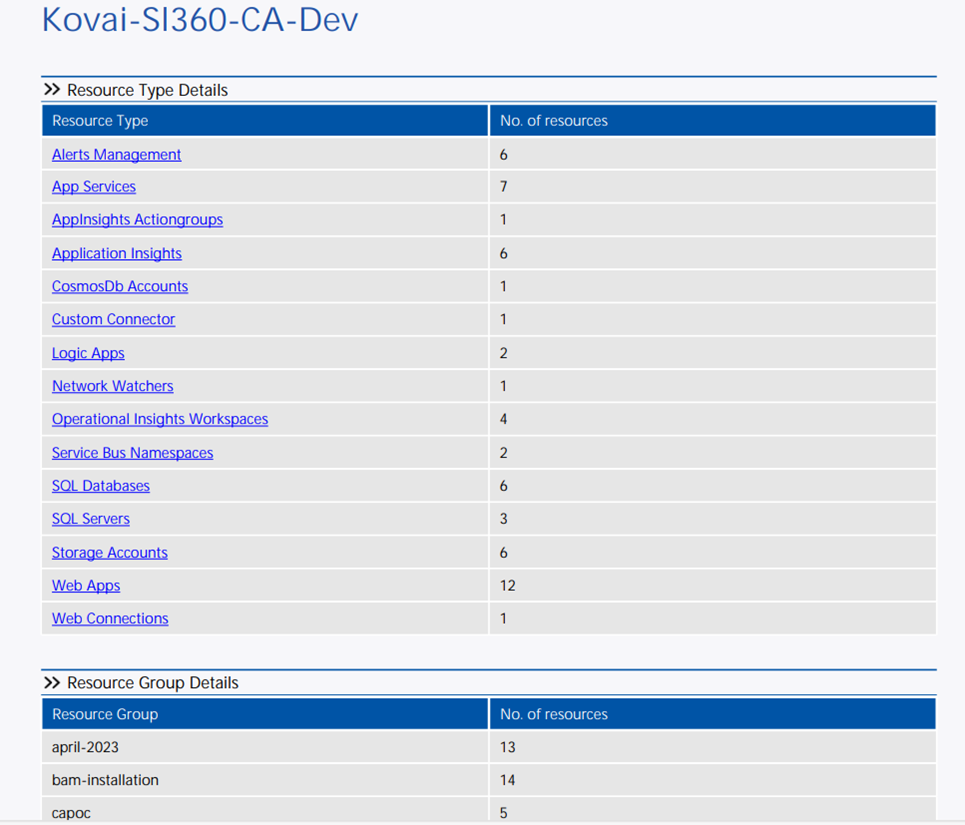
Billing details
The billing details document offers a scrutinized report on the billing data with graphical representations. It includes incurred costs grouped by resource, resource type, location, and resource group. On top of that, it supplies a breakdown of expenses associated with individual resources. This report also provides a chart view with different types of cost split up such as resource-based, resource-type-based, location-based, etc.
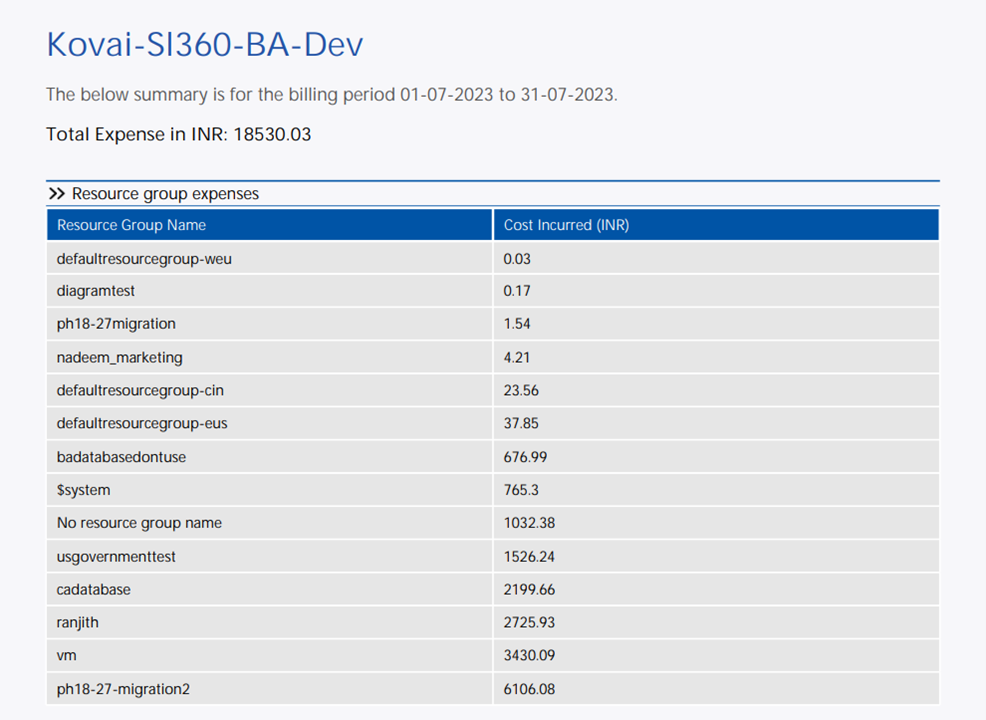
Security compliance
The primary requirement for any infrastructure deployment is to guarantee the security and compliance of data, procedures, access, and utilization. Imagine an organization with an extensive set of rules assigned to each subscription for security purposes. It is imperative to maintain comprehensive documentation on security compliance at every level.
This ensures ease of data tracking in the future. These reports provide tracking of the implementation of compliance rules of all the provided subscriptions, following organization standards and practices, and for auditing purposes in a single document, which can be a valuable set of information to track and compare data.
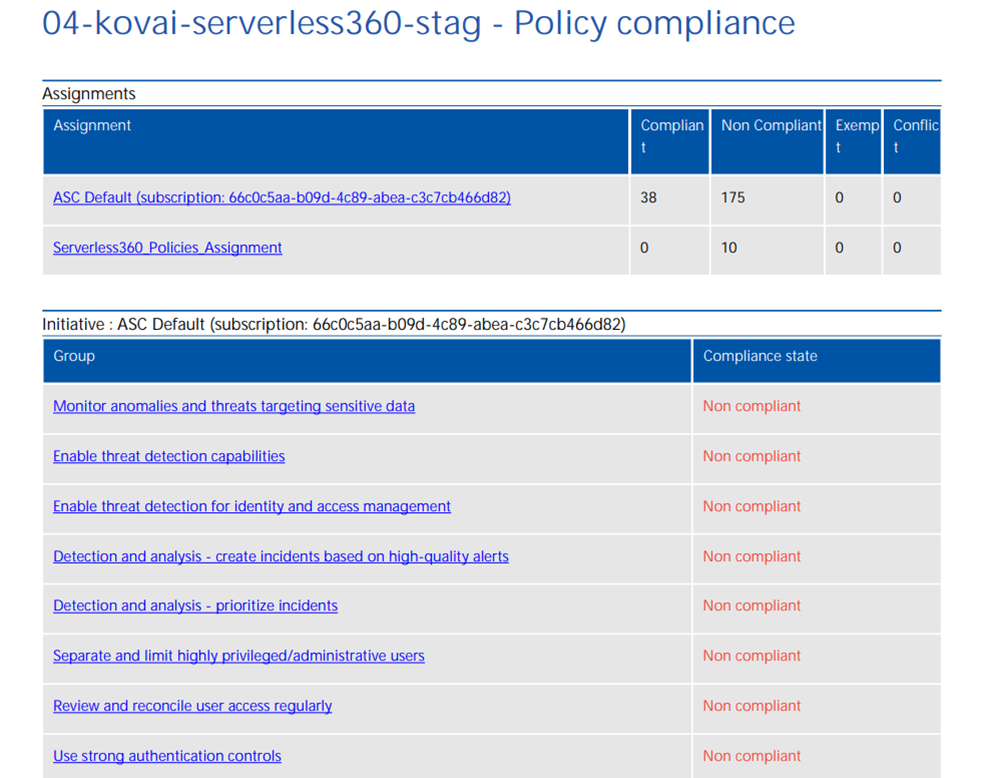
Cost comparison
Azure Documenter enables users to generate a document that conducts a cost comparison between various subscriptions and resources spanning two distinct time frames. The generated cost comparison document evaluates each subscription based on its location, resource type, resource group, and individual resources, facilitating a comprehensive analysis of cost variations.
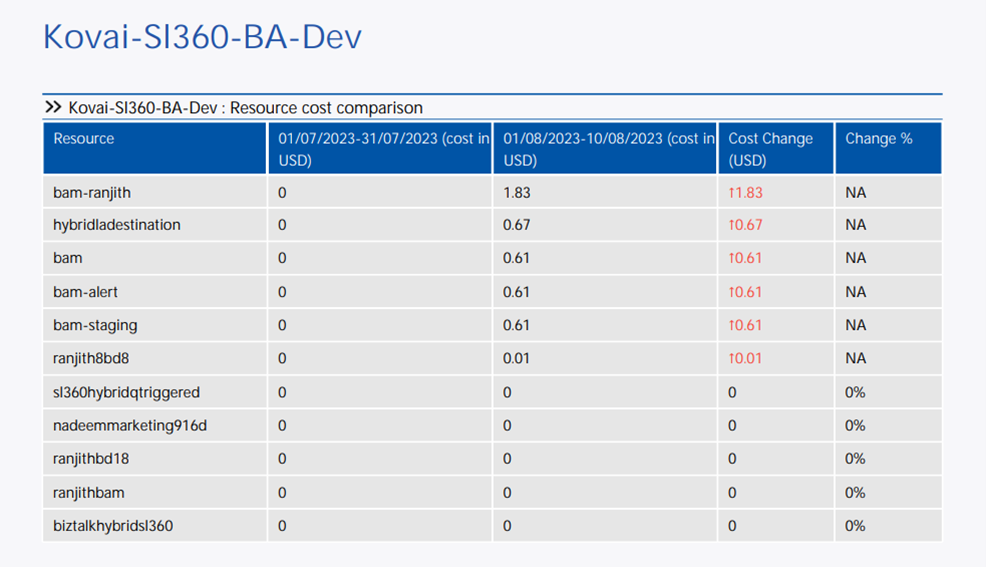
User access details
User access details furnish an exhaustive report regarding users within an Active Directory, delineating their roles across subscriptions, resource groups, and individual resource levels. The report can be grouped based on subscription, resource group, or users.
Within any organization, establishing clear definitions of user access is crucial. Equally significant is the monitoring of this data to prevent security breaches. The Azure Documenter’s user access details document consolidates all user information and corresponding access privileges under one comprehensive overview.
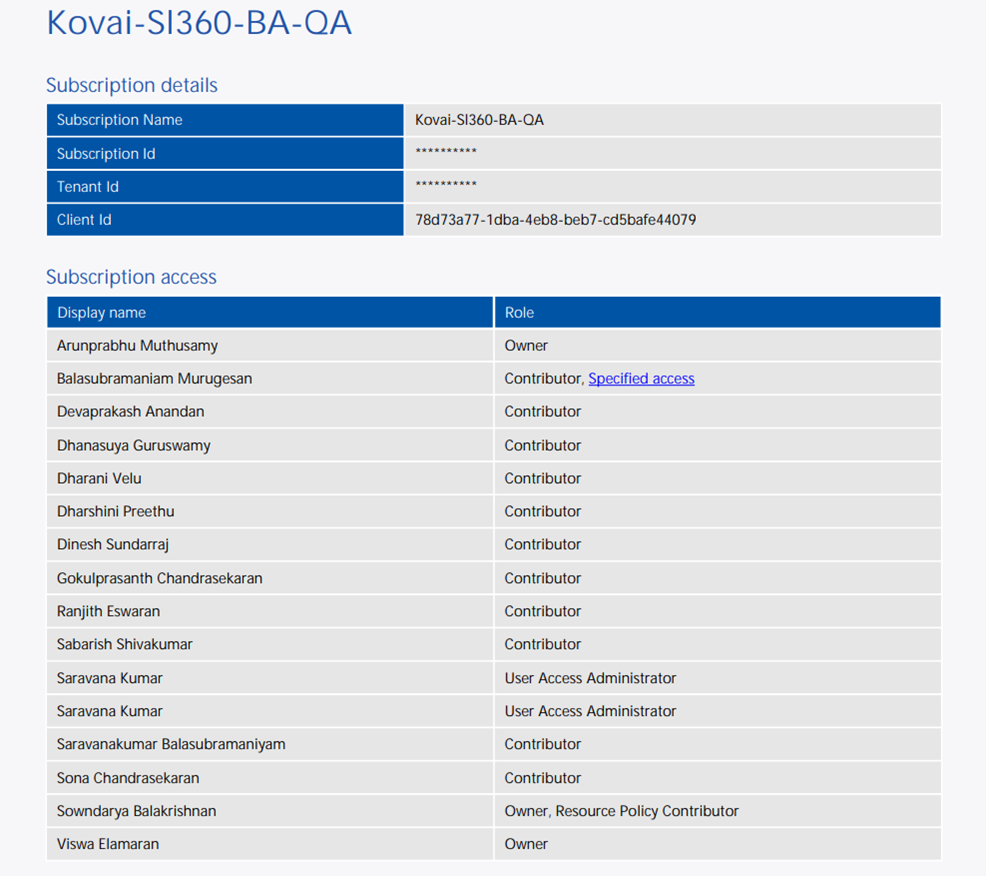
Resource auditing
Azure Documenter enables users to generate an audit log report for all their Azure Subscriptions, concisely summarizing changes made within a Subscription during the selected timeframe. This report encompasses details about resources that were created, altered, or removed, along with the corresponding cost impact.
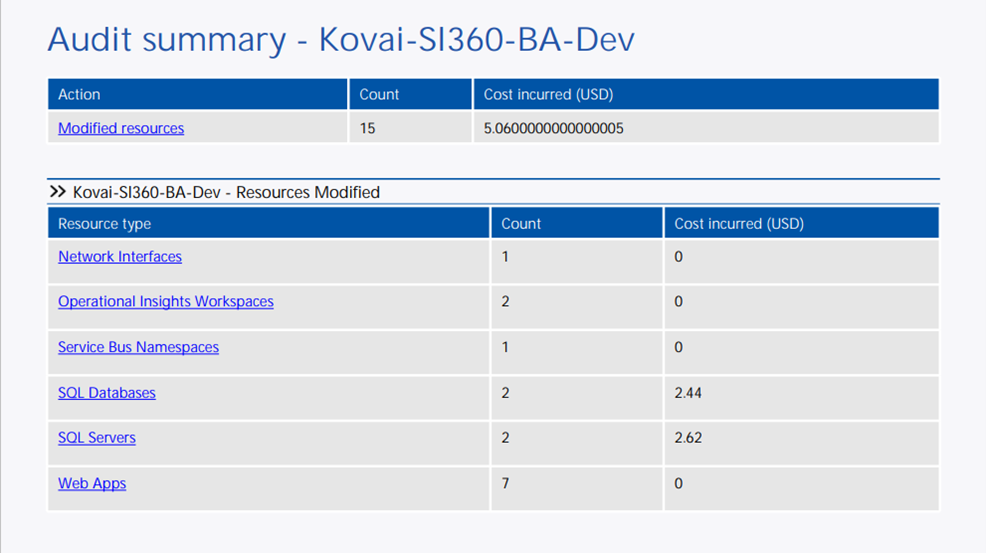
Rightsizing recommendations
This document type provides recommendations for cost savings, improved performance, and better resource utilization for each of our subscriptions in a consolidated view. The detailed insights provided for each subscription are valuable, offering a comprehensive overview of resources that may exceed their assigned SKU or not maximize it to their full potential. Implementing these recommendations enables organizations to reduce costs and optimize their Azure expenditures.
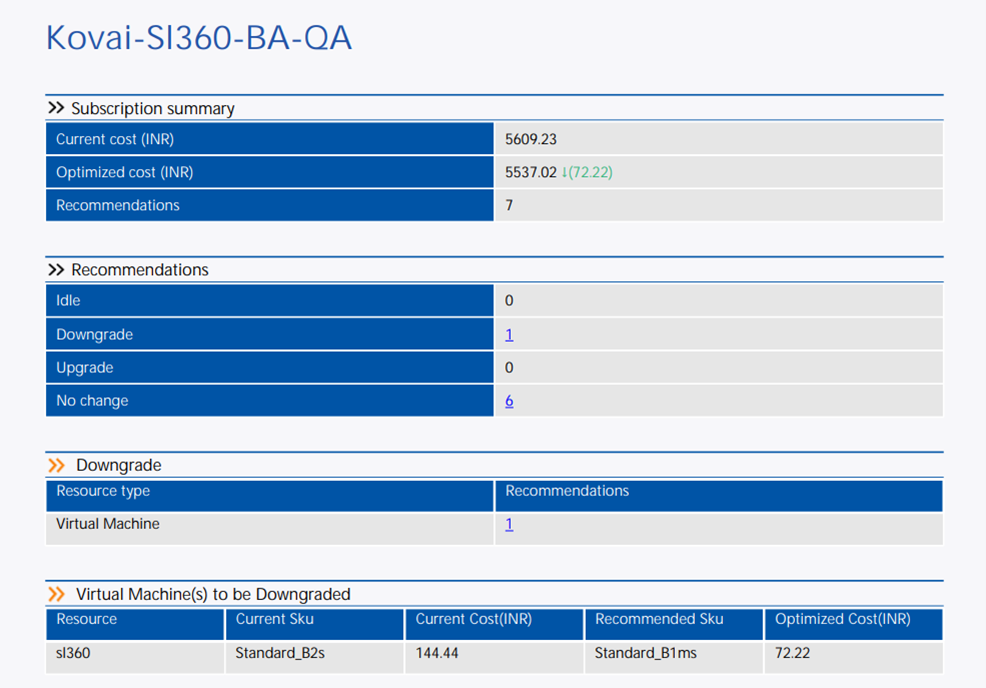
Schedule Documentation and notify Stakeholders
Generating documentation for an established and evolving Azure estate with thousands of resources may take a long due to data collection, computation, and analysis. It is not practical to manually initiate documentation at the intended time and for many subscriptions and configurations. Relevant stakeholders may have to be notified once the documentation is complete. Azure Documenter provides automation to address these requirements. Notifications are sent to widely used channels like emails, Microsoft Teams, etc.
Publishing options – PDF, online & manage documentation
The generated documentation can be published and shared with stakeholders. Azure Documenter provides two different publishing options:
- Publish as PDF – The documents can be published as PDF files and stored in default storage provided by Turbo360 or at Azure Storage of your choice. Once the PDF file is created and stored, a unique link for the document will be provided within the portal.
- Publish to online platform – Document360 – Managing PDF files and maintaining the versions may become difficult after a stage when you deal with multiple environments and too many documents generated over time. There are a lot of content publishing tools available online. One such software-as-a-service is Document360, an online knowledge-base authoring and publishing platform.
Conclusion
Compiling comprehensive documentation consolidating resource providers, their instances, locations, and cost details can be a formidable task. But Azure Documenter in Turbo360 does it in style, streamlining the process effortlessly, unlike any other tool on the market. Additionally, we can automatically generate Azure architecture diagrams to enhance our understanding of our Azure architecture. Policies in the Azure documenter is another outstanding feature that allows users to define custom policy and initiative definitions.




